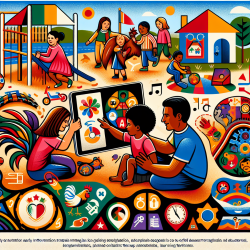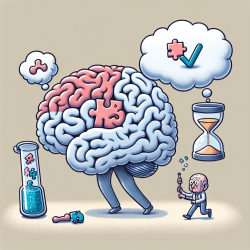Introduction
In today's digital age, the health and well-being of adolescents are more important than ever. As a speech-language pathologist, understanding the factors that influence children's physical activity can help us create better outcomes for their overall development. A recent study titled Perceived neighborhood safety related to physical activity but not recreational screen-based sedentary behavior in adolescents sheds light on the relationship between perceived neighborhood safety and adolescent physical activity. This blog will explore how these findings can be applied in practice to foster healthier lifestyles for children.
The Importance of Perceived Neighborhood Safety
The study reveals that adolescents who perceive their neighborhoods as unsafe are 21% less likely to engage in physical activity five or more days a week. This finding highlights the critical role that perceived safety plays in encouraging physical activity among youth. As practitioners, it is essential to recognize the impact of environmental factors on children's health behaviors and work towards creating safer communities.
Encouraging Physical Activity
To promote physical activity among adolescents, consider the following strategies:
- Community Engagement: Collaborate with local authorities and community organizations to improve neighborhood safety through initiatives such as neighborhood watch programs and improved street lighting.
- School-Based Programs: Advocate for school-based physical activity programs that encourage participation in sports and physical education classes.
- Parental Involvement: Educate parents on the importance of physical activity and encourage them to support their children's participation in organized sports and outdoor activities.
Reducing Screen-Based Sedentary Behavior
While perceived neighborhood safety did not significantly impact recreational screen-based sedentary behavior, sports team participation emerged as a strong correlate of reduced screen time. Encouraging adolescents to join sports teams can be an effective strategy to decrease sedentary behavior. Here are some ways to promote sports participation:
- Accessible Sports Programs: Work with schools and community centers to provide affordable and accessible sports programs for all children.
- Highlight Benefits: Educate adolescents and their families about the physical, social, and emotional benefits of participating in sports.
- Role Models: Introduce children to role models in sports who can inspire them to stay active and healthy.
Conclusion
Understanding the relationship between perceived neighborhood safety and physical activity is crucial for creating environments that support healthy lifestyles for adolescents. By implementing community-based strategies and promoting sports participation, practitioners can help reduce screen-based sedentary behavior and encourage physical activity. To read the original research paper, please follow this link: Perceived neighborhood safety related to physical activity but not recreational screen-based sedentary behavior in adolescents.










